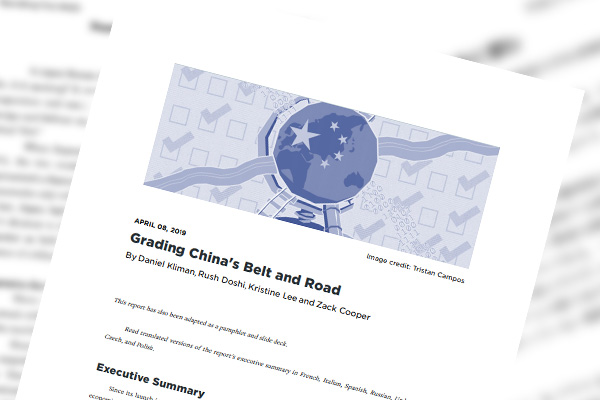The Belt and Road Initiative to which Chinese President Xi Jinping is committed would not only expand China’s economic interests and political influence globally but also cause geopolitical risks including the possibility of China-built infrastructure being used for military purposes, as highlighted in a U.S. study report released recently.
A U.S. think tank examines 10 BRI projects
The U.S. think tank Center for a New American Security has looked into 10 BRI projects to check seven points such as national sovereignty erosion and geopolitical risks under a study commissioned by the U.S. Department of State. The report identified geopolitical risks in five projects - a space complex in Argentina, a facial recognition system in Zimbabwe and port development projects in Israel, Myanmar and Vanuatu.
The Argentine space mission control center was built by China at a cost of $50 million, becoming operational in March 2018. It is run by an arm of the Chinese People’s Liberation Army, implicating Argentina in U.S.-China military competition, says the CNAS report.
The government of Zimbabwe signed a contract with a Chinese artificial intelligence company in March 2018 to collect facial information of citizens, with surveillance cameras installed throughout the country. Zimbabwe could emulate China, utilizing digital technology to suppress citizens, says the report.
In 2015, the Israeli government signed a contract for a Chinese company to construct a new terminal at Haifa Port and operate the facility for 25 years after its completion. The U.S. government has expressed concerns about leaving China to operate the port that the U.S. Sixth Fleet regularly visits, leading Israel to review the contract.
The $10 billion Kyaukpyu Port project in Myanmar calls for developing a deep sea port and a special economic zone. It would pave the way for China to transport Middle Eastern crude oil via a pipeline from the Indian Ocean port to the southern China province of Yunnan directly without passing the narrow Malacca Straits. The deep sea port could be available for Chinese naval ships. As the Myanmar government hopes to scale back the project on concern about the massive construction cost, however, the project has lagged behind schedule.
U.S. officials believe a China-rehabilitated wharf of Port Luganville in the southern Pacific island nation of Vanuatu is large enough to dock an aircraft carrier. If China uses the port for military purposes, Vanuatu may become a center of military competition putting China against the United States and Australia.
Japanese assistance given high marks
The CNAS report also examines Vanuatu’s Port Vila wharf development project backed by Japanese official development assistance in comparison with Chinese BRI projects and certifies the Japanese ODA project as featuring clear commercial rationale and not having any problem including a geopolitical risk.
The Japanese government has been promoting Prime Minister Shinzo Abe’s Free and Open Indo-Pacific initiative as an alternative to the Chinese BRI, describing Japan’s infrastructure development projects as giving priority to openness, transparency, economic viability and financial soundness of recipient countries. In the future, the government chould publicize the advantage of Japanese ODA projects more aggressively by emphasizing that Japanese projects differ much from BRI projects in entailing no geopolitical risk.
Yasushi Tomiyama is a senior research fellow and Planning Committee member at the Japan Institute for National Fundamentals and a former foreign news editor and bureau chief at Washington, D.C., London and Bangkok for the Jiji Press.


